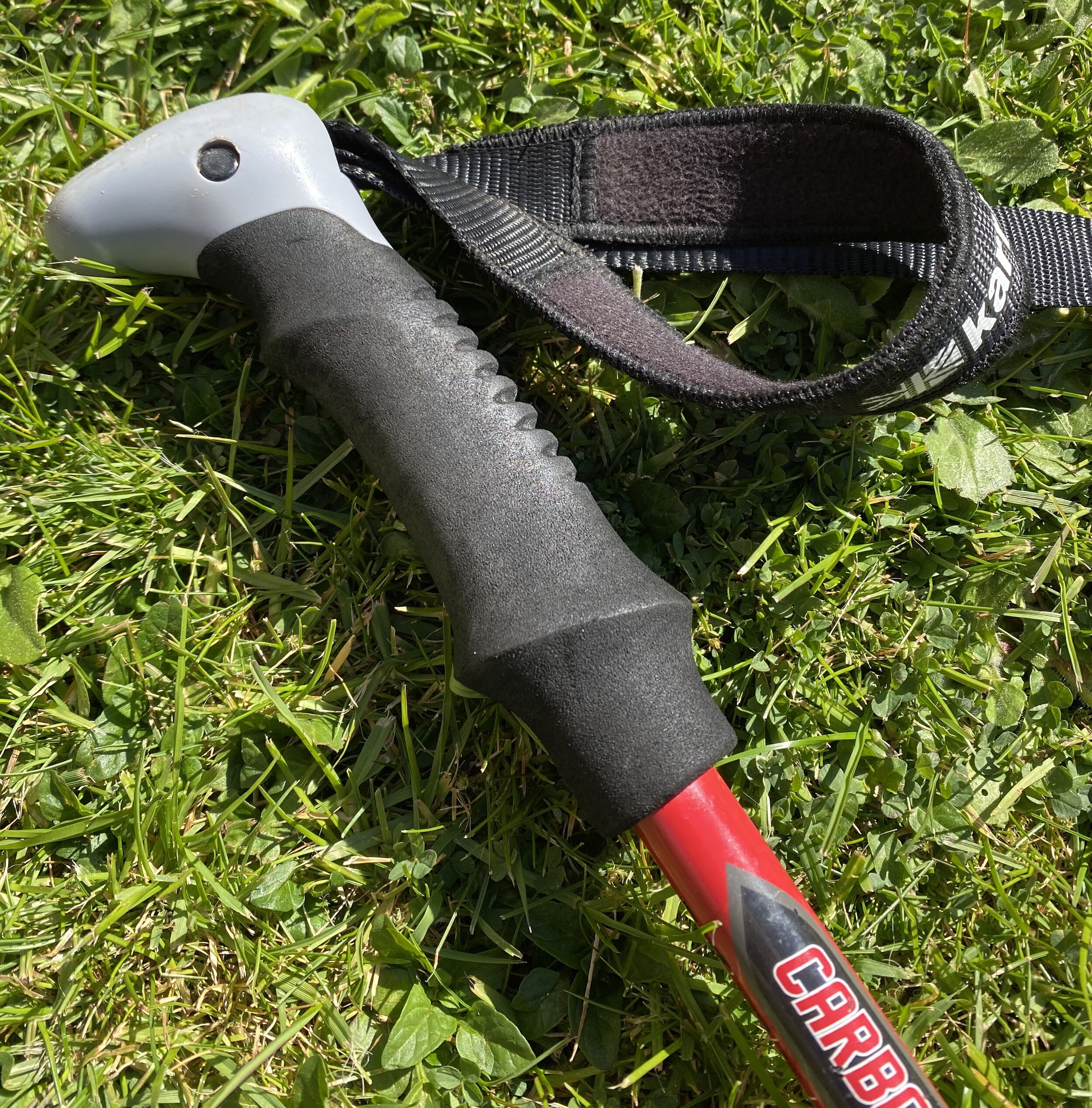Karrimor Carbon Trek Walking Poles- Review
I first used walking poles when I was recovering from a knee injury. I was about to go to Skye, but I still felt weakness when I put too much pressure on one leg. A friend said I should try walking poles. I had seen folk using them, and always wondered what was wrong with them that they needed 2 walking sticks. Anyway, I was desperate to get into the mountains, so I parted with my cash for a really expensive pair of Leki poles.
They made a huge difference. They definitely took the pressure off my leg joints and better still, they made going uphill easier, and faster, as I could now let my arms join in the fun! Poles are useful for stability and helpful for feeling the ground when crossing bogs or streams. If you stand on bathroom scales then press down with the poles on either side, you can see how much weight they are taking off your body. Imagine that multiplied by every step you take on the hill!
There are lots of poles available and they probably all work. There’s not really that much that’s hi-tech about them. There are still some available with “shock absorbers” built in but I think they tend to be dying out. I always thought they reduced the feeling of the ground through the pole, so I never liked that design anyway.
When you pay your money then, what are you paying for? There are different closing/locking mechanisms. Some of them have different handle materials, the cheap ones are usually solid plastic the more expensive are hard foam or cork. The wrist loops are often more padded on the pricier models, although some of the guides at Large Outdoors never use the wrist straps at all.
What I really like about the Karrimor Carbon Trek Poles is their weight, or the lack of it. Poles often spend quite a bit of time attached to my rucksack. I tend not to use them on flat or very steep, rocky ground. I hardly notice these when I’m carrying them. They weigh about 190g per pole, so again, that’s less strain on my joints. They are carbon mixed with fibreglass and have proved to be strong enough for extended use. You can buy stronger poles but I’ve never needed them.
They use a telescopic 3 section construction and are secured with a “flip over lock.” I have found this to be more reliable than the type that twist-lock into place. They are fairy long when collapsed down, so they need to go on the outside of a rucksack rather than inside but if you’re not climbing or scrambling, that probably isn’t a problem. They have super hard wearing tungsten tips that grip well (but also come with that that annoying rubber ferrule thingy that I’m always trying to get clients to remove, save it for the tarmac.)
The handles are comfortable foam grips that are moulded so they don’t slip out of your hands and the wrist loops are webbing that’s padded with neoprene. I will happily use these on a full 12 hours of Yorkshire Three Peaks without noticing any discomfort at all.
One of the best things about them is the price. If you want a laugh, search your favourite online outdoor shop for walking poles, and sort the search by price from high to low. You can easily pay £160 for a pair of poles that do exactly what these ones do. £34.99 from Sports Direct.


